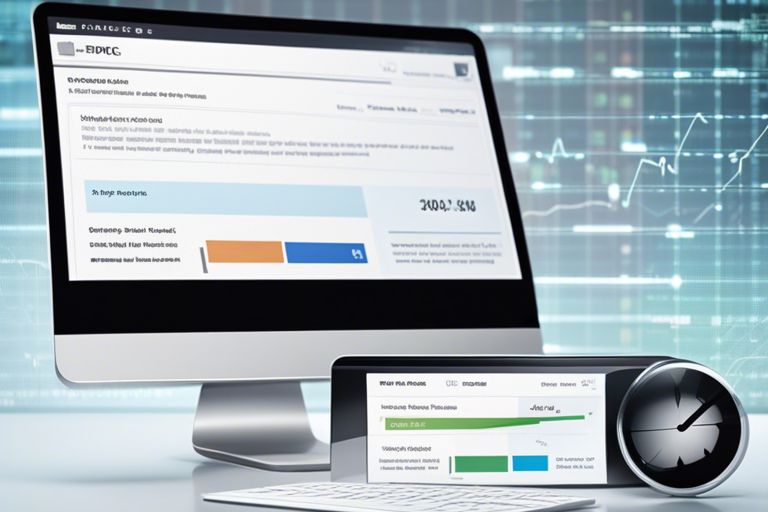Overwhelmed by the thought of A/B testing your emails? Don’t worry, we’ve got you covered! A/B testing is a highly effective method to optimize your email campaigns and increase engagement. In this guide, we’ll walk you through the process step by step, from setting clear goals to analyzing the results. By the end of this post, you’ll be equipped with the knowledge and tools to start A/B testing your emails like a pro!
Key Takeaways:
- Define Your Goals: Before starting an A/B test, clearly outline the objectives you want to achieve with your email campaign.
- Test One Element at a Time: To accurately measure the impact of changes, make sure to only test one variable at a time, such as subject line, call-to-action, or sender name.
- Analyze Results and Iterate: After conducting the test, analyze the results to see which version performed better. Use these insights to iterate and improve future email campaigns.

Understanding A/B Testing for Emails
What is A/B Testing and Why is it Important
Your email marketing campaigns can greatly benefit from A/B testing, which involves sending two different versions of an email to segments of your audience to see which performs better. This allows you to make data-driven decisions and optimize your emails for higher engagement and conversion rates.
Benefits of A/B Testing for Email Campaigns
Any email marketing strategy can benefit from A/B testing as it provides valuable insights into what resonates best with your audience. By testing different elements such as subject lines, content, images, and call-to-action buttons, you can continuously improve the effectiveness of your email campaigns.
To further maximize the benefits of A/B testing for email campaigns, it is crucial to set clear goals and metrics for each test, analyze the results diligently, and implement the learnings in future campaigns. Regular testing and optimization will help you deliver more personalized and engaging content to your subscribers, ultimately leading to better results for your business.
Preparing for A/B Testing
Identifying Goals and Objectives
You should start by clearly defining what you want to achieve with your A/B test. Whether it’s to increase open rates, click-through rates, or conversions, knowing your goals will help you design effective experiments. This A/B test your marketing email article can provide more guidance on setting goals for your email campaigns.
Choosing the Right A/B Testing Tools
Some A/B testing tools offer various features such as segmentation, personalization, and detailed analytics. Consider your budget, technical expertise, and specific needs when selecting the right tool for your email marketing campaigns. Look for tools that integrate seamlessly with your email service provider to streamline the testing process.
Tips for Effective A/B Testing
After determining your goals and metrics, there are several tips to keep in mind for effective A/B testing of your emails:
- Test one element at a time to accurately measure its impact.
- Ensure your test sample size is statistically significant.
- Continue testing regularly to optimize your email performance.
Though A/B testing can be a powerful tool, it’s necessary to approach it strategically. For more in-depth information on A/B testing email campaigns, check out A/B Testing Email Campaigns: What You Need to Know.
Selecting the Right Elements to Test
The key to successful A/B testing is selecting the right elements to test for meaningful insights into your email performance.
Creating Relevant and Engaging Test Variations
Creating variations that are not only different but also relevant and engaging to your audience is crucial for obtaining actionable data from A/B testing.
Effective A/B testing relies on creating variations that resonate with your target audience and drive desired actions.
Avoiding Common A/B Testing Mistakes
If you want to ensure the accuracy and reliability of your A/B tests, it’s crucial to avoid common mistakes that can skew your results.
Testing the same element repeatedly or not segmenting your audience properly are common pitfalls to avoid in A/B testing.
Factors to Consider When Analyzing Results
Unlike other types of marketing tests, email A/B tests require careful consideration of several factors to accurately interpret the results. When analyzing your A/B test results, keep the following in mind:
- Sample size: Ensure that your sample size is large enough to provide significant results.
- Statistical significance: Consider whether the differences in metrics between variations are statistically significant.
- Timing: Take into account the time of day and day of the week when the emails were sent.
Recognizing these factors will help you make informed decisions based on your A/B test results.
Understanding Statistical Significance
For a meaningful A/B test, it’s crucial to understand statistical significance. This statistical concept helps determine if the differences observed between variations are due to random chance or if they are statistically valid results.
Interpreting Test Results and Drawing Conclusions
Conclusions drawn from A/B test results should be based on statistical significance and actionable insights. Understanding the data and drawing meaningful conclusions can help improve future email marketing strategies.
Drawing Conclusions
Interpreting A/B test results involves more than just looking at open rates and click-through rates. It’s important to analyze the results in the context of your overall marketing goals and audience preferences to draw meaningful conclusions and make informed decisions for future campaigns.
FAQ
Q: What is A/B Testing for Emails?
A: A/B Testing for Emails is a method used to compare two versions of an email to determine which one performs better. It involves sending two variations of an email to a similar group of recipients and analyzing the results to see which version generates a higher open rate, click-through rate, or other desired actions.
Q: How to set up an A/B Test for Emails?
A: To set up an A/B test for emails, follow these steps:
- Define your goals and what you want to test (subject line, sender name, content, call-to-action, etc.).
- Split your email list into two random, but equally sized, segments.
- Create two versions of the email with the element you want to test being the only difference between them.
- Send Version A to one segment and Version B to the other.
- Track the results and analyze which version performed better based on your goals.
- Use the insights gained from the A/B test to optimize future email campaigns.
Q: What are some best practices for A/B Testing Emails?
A: Some best practices for A/B testing emails include:
- Testing one element at a time to accurately determine its impact.
- Testing a significant portion of your email list to ensure statistical significance.
- Testing regularly to continuously improve your email performance.
- Documenting your tests and results to track your progress and learn from past tests.
- Understanding your audience and tailoring tests to their preferences and behaviors.

